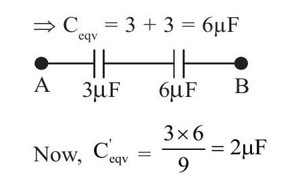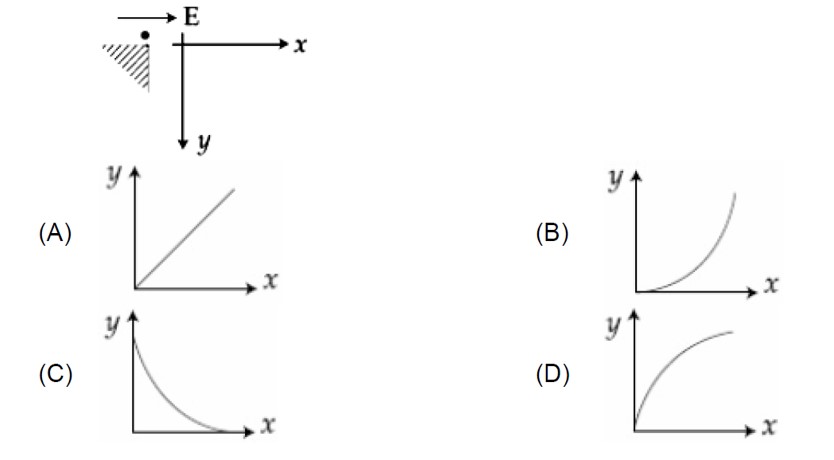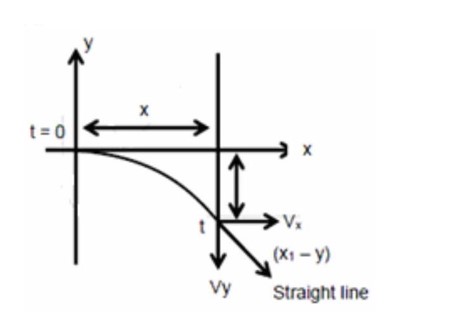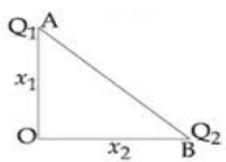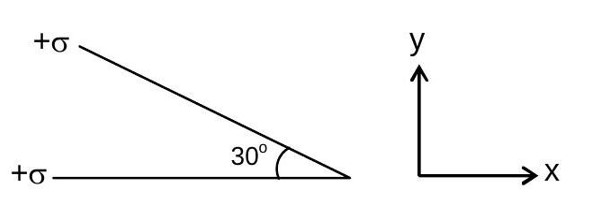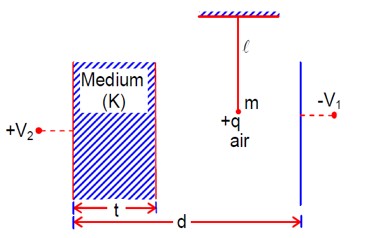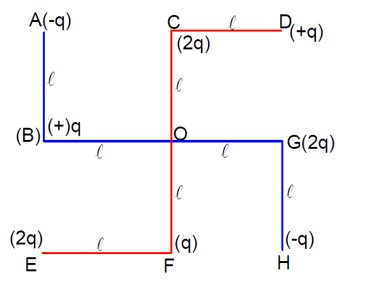Physics Electric Charge and Field
Get insights from 91 questions on Physics Electric Charge and Field, answered by students, alumni, and experts. You may also ask and answer any question you like about Physics Electric Charge and Field
Follow Ask QuestionQuestions
Discussions
Active Users
Followers
New answer posted
2 months agoContributor-Level 9
qE = mg ⇒ neE = (4/3)πr³ρg
⇒ n = (4πr³ρg) / (3eE) = (4 * 3.14 * (2 * 10? ³ )³ * 3 * 10³ * 9.81) / (3 * 1.6 * 10? ¹? * 3.55 * 10? ) = 1.73 * 10¹?
New question posted
2 months agoNew answer posted
2 months agoContributor-Level 10
Net field along AB at O must be zero.
E? cosα = E? sinα
(kQ? /x? ²) (x? /AB) = (kQ? /x? ²) (x? /AB)
Q? /Q? = x? ³/x? ³
New answer posted
3 months agoContributor-Level 10
Tsinθ = qE
Tcosθ = mg
tanθ = qE/mg
E = V/d_eff. V = V? - (-V? ) = V? +V?
C? =kε? A/t, C? =ε? A/ (d-t).
Capacitors are in series. Q=C_eqV. E inside dielectric = σ/ (kε? ) = Q/ (Akε? ).
E in air = σ/ε? = Q/Aε?
Let's follow the solution.
Q = (C? / (C? +C? ) (V? +V? ).
E = E_air = Q/ (Aε? )
tanθ = qQ/ (Aε? mg) = q/ (Aε? mg) * (C? / (C? +C? ) (V? +V? )
Substitute C? and C?
This is getting complicated. The solution directly uses an expression for E. E = Q/C? Aε?
New answer posted
3 months agoContributor-Level 10
E? (due to A and G) = 2 * (kq/l²)cos (45) = √2 kq/l² (downwards)
E? (due to B and F) = 2 * (kq/l²)cos (45) = √2 kq/l² (towards left)
E? (due to C and H) = 0
E? (due to D and E) = 0
Resultant E = √ (E? ²+E? ²) = √ (2 (kq/l²)²+2 (kq/l²)²) = 2kq/l²
(Solution in the image seems to be different.)
Taking an Exam? Selecting a College?
Get authentic answers from experts, students and alumni that you won't find anywhere else
Sign Up on ShikshaOn Shiksha, get access to
- 65k Colleges
- 1.2k Exams
- 679k Reviews
- 1800k Answers

